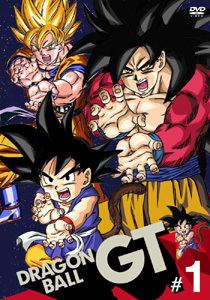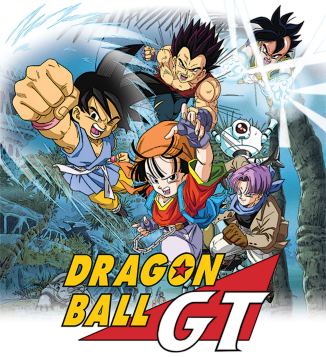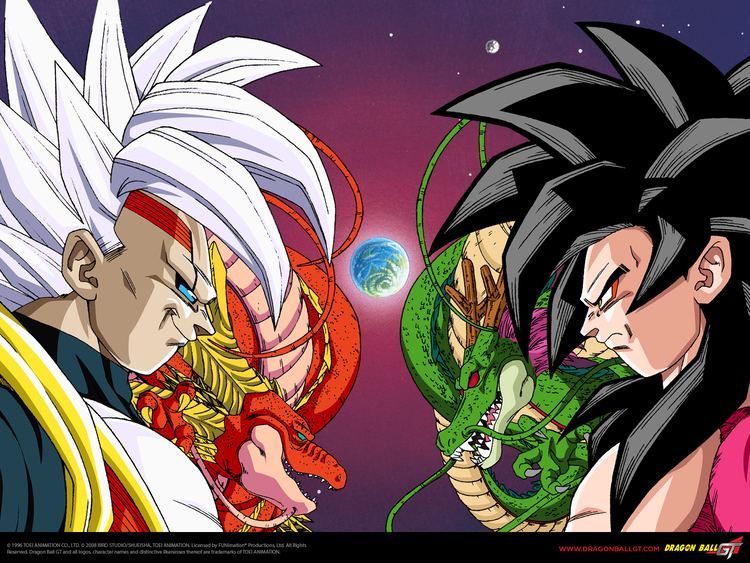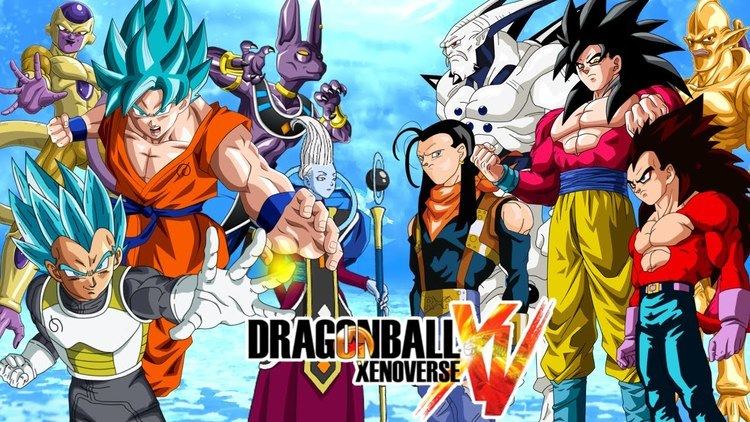7.6 /10 1 Votes7.6
8.3/10 TV Written by Atsushi Maekawa First episode date 7 February 1996 | 6.7/10 MyAnimeList Directed by Osamu Kasai Music by Akihito Tokunaga Original network Fuji TV, Animax Final episode date 19 November 1997 | |||||||||||||||||||||||||||||||||
 | ||||||||||||||||||||||||||||||||||
Licensed by Madman EntertainmentFunimationManga Entertainment Genres Adventure, Martial Arts Film, Science fantasy Similar Dragon Ball Z, Dragon Ball Super, Dragon Ball Z Kai, Dragon Ball, Dragon Ball Z: Bardock | ||||||||||||||||||||||||||||||||||
Dragon ball gt review analysis is it a good or bad anime series
Dragon Ball GT (Japanese: ドラゴンボール
Contents
- Dragon ball gt review analysis is it a good or bad anime series
- Plot
- Production
- Music
- Localization
- Home release
- Art books and manga
- Video games
- Reception
- References

It is a sequel to the previous Dragon Ball and Dragon Ball Z anime series. As Dragon Ball Z covered the end of the manga, a new story set after Z was created and called Dragon Ball GT, not based on any previous work.

Plot

Five years after the end of the Dragon Ball Z anime (10 years in the Funimation dub), Goku is turned back into a child by the Black Star Dragon Balls (ダークドラゴンボール, Dāku Doragon Bōru, lit. "Dark Dragon Balls") used by Pilaf and is forced to travel across the universe to retrieve them along with his granddaughter Pan and Trunks. The trio go through various adventures in their journey to find the Black Star Dragon Balls, until they encounter the evil artificial Tuffle, Baby, who intends to destroy the Saiyan race.

Baby has the ability to invade other people's bodies and turn them into Tuffles, as well as using a body to combine it with his own power and become a fighter. After turning practically all of the Earth's population, including the Saiyans, into Tuffles, Baby decides to remain inside Vegeta's body and use it to confront Goku. Goku fights him and is defeated, but after having his tail regenerated, achieves the level of Super Saiyan 4 (超サイヤ人フォー, Sūpā Saiya-jin Fō), and destroys Baby, propelling him into the sun with a Kamehameha. Piccolo then sacrifices himself to turn the Black Star Dragon Balls into stone permanently when the Earth explodes after Goku and the others helped everyone evacuate to the Tuffle Planet.

A year after Baby's defeat, Dr. Myuu (Baby's creator) and Dr. Gero (creator of the Red Ribbon Army androids), create a replica of Android 17 and have it fuse with the original Android 17, creating Super 17. Super 17 at first seems impervious to Goku's attacks, but when Android 18 attacks him for killing Krillin, Goku takes advantage of the distraction to penetrate through Super 17 with his Dragon Fist technique, then fires a Kamehameha through the wound.
Due to overuse of the Dragon Balls, seven Shadow Dragons are then created. All but the most powerful, Syn Shenron, are defeated. Syn Shenron appears to be losing until he absorbs the Dragon Balls and gains more power, becoming Omega Shenron and overwhelming Goku. Goku is about to sacrifice himself to destroy the evil dragon, but then Vegeta turns up in Super Saiyan 4 form, thanks to Bulma's new device, the Blutz Wave Generator. Goku and Vegeta fuse, creating Gogeta, who uses his immense power to taunt Omega Shenron. However, their fusion then ends and Goku loses his Super Saiyan 4 form along with Vegeta. Eventually, using the energy of every living being in the universe, Goku makes a Spirit Bomb powerful enough to destroy Omega Shenron.
The real Shenlong appears to grant Goku and his friends one last wish, and then proceeds to disappear — along with Goku and the Dragon Balls. Several decades later, Goku's great-great-grandson, Goku Jr., participates in the World Tournament as his grandmother Pan cheers for him. Pan then sees Goku and tries to approach him but Goku disappears into the crowd. Goku then leaves the World Tournament with a flashback of his timeline. After the flashback of his timeline ends, Goku then catches his power pole and rides off on his nimbus cloud.
Production
Unlike the other anime series in the Dragon Ball franchise, Dragon Ball GT does not adapt the manga series written by Akira Toriyama, but tells an original story conceived by the Toei Animation staff using the same characters and universe from the original Dragon Ball manga and it continues the story where Dragon Ball Z had left off. Toriyama did, however, come up with the Dragon Ball GT name, which stands for "Grand Touring" in reference to the series having the characters travel through the universe, and designed the appearances of the main cast. Toriyama himself referred to GT as a "side story of the original Dragon Ball".
Chief character designer Katsuyoshi Nakatsuru said he agonized over designing Super Saiyan 4 Goku, which was the idea of the show's producers, questioning whether it was necessary to go further with the transformations. Because Super Saiyan 4 is brought about while in a Saiyan's Ōzaru (大猿, "Great Ape") form, he made the hair more "wild" and covered Goku's body in red fur. There was only a single final draft of the character, although Nakatsuru did consider making the hair blond, he ended up choosing black as it provides more contrast with the red fur.
Music
The music of Dragon Ball GT was composed by Akihito Tokunaga replacing Shunsuke Kikuchi, due to his retirement, although the series uses five pieces of theme music by popular recording artists. Field of View performs the series opening theme, "Dan Dan Kokoro Hikareteku" (DAN DAN 心魅かれてく), which is used for all 64 episodes. "Hitori Janai" (ひとりじゃない), performed by Deen, is used for the ending theme for the first 26 episodes. Starting at episode 27, the series begins using Zard's "Don't You See!" for the ending theme. Episode 42 marks the next ending theme change, with "Blue Velvet" by Shizuka Kudō being used. "Sabitsuita Machine Gun de Ima o Uchinukō" (錆びついたマシンガンで今を撃ち抜こう), performed by Wands, is introduced as an ending theme in episode 51. It was used as the ending theme for the remainder of the series, except for the final episode which reuses the opening theme.
Localization
Funimation licensed the series for an English language broadcast in the United States. Their English dub of the series utilized their own musical score composed by Mark Menza and aired on Cartoon Network from November 7, 2003 to April 16, 2005. The company's home video release and original television broadcast both skipped the first 16 episodes of the series. Instead, Funimation created a composition episode entitled "A Grand Problem," which used scenes from the skipped episodes to summarize the story. The skipped episodes were later shown on Cartoon Network as "The Lost Episodes" after the original broadcast concluded. Funimation's English dub began re-airing in the US on Nicktoons from January 16, 2012 to December 13, 2012, and rerun until January 2, 2015.
AB Groupe (in association with Blue Water Studios) produced an alternate dub for Europe and Canada and was aired on YTV and Toonami UK, which divided the episodes into two seasons while the original Japanese music composed by Akihito Tokunaga is retained in the Blue Water English dub. The AB Groupe Dub first ran in the UK from March 3, 2003 on CNX until August 17, 2003.
Home release
In Japan, Dragon Ball GT did not receive a home video release until June 15, 2005, eight years after its broadcast. This was a remastering of the series in a single 12-disc DVD box set, that was made-to-order only, referred to as a "Dragon Box". The content of this set began being released on mass-produced individual 6-episode DVDs on February 6, 2008 and finished with the eleventh volume released on June 4, 2008.
In North America, Funimation began releasing Dragon Ball GT on both VHS and DVD in edited and uncut formats in April 2003, starting with episode 17, after they made their own clip show episode titled 'A Grand Problem' to bring the audience up to speed with the story. After the final fifteenth volume, they released the first 16 episodes in five "Lost Episode" volumes between July 2004 and February 2005. They then released the series in DVD box sets; the first (beginning with episode 17) in October 2005 and finished in November 2007 with the first 16 episodes as a "Lost Episode" box set. Two years later, they began releasing the series again in DVD "remastered season" sets that finally put the episodes in proper chronological order; the first on December 9, 2008 and the second on February 10, 2009. A Game Boy Advance Video cartridge containing the episodes "A Grand Problem" and "Pan's Gambit" was released on September 7, 2004 by Majesco. A complete series DVD box set including the TV special was later released on September 21, 2010. Manga Entertainment began distributing Dragon Ball GT on DVD in the UK on January 20, 2014, which are re-releases of Funimation's 2008 and 2009 sets.
Art books and manga
There are two companion books to the series, called the Dragon Ball GT Perfect Files, released in May 1997 and December 1997 by Shueisha's Jump Comics Selection imprint. They include series information, illustration galleries, behind-the-scenes information, and more. They were out of print for many years, but were re-released in April 2006 and this edition is still in print.
In 2013, an anime comic version of Dragon Ball GT began running in Shueisha's Saikyō Jump magazine. It began serialization in the January 2014 issue, which was released on December 4, 2013.
Video games
There have been two video games produced based on Dragon Ball GT. The first being Dragon Ball GT: Final Bout in 1997 for the PlayStation, which received international releases that same year, making it the first Dragon Ball game to be released in North America. The 2005 Game Boy Advance game Dragon Ball GT: Transformation was released exclusively in North America.
Two "GT Packs" were released for the game Dragon Ball Xenoverse on March 10, 2015 and April 14, 2015 respectively. Both Packs can also be obtained through the game's season pass.
Reception
In contrast to Dragon Ball and Dragon Ball Z, Dragon Ball GT has been met with mixed to negative reviews. IGN called it "downright repellent," mentioning that the material and characters had lost their novelty and fun. They also criticized the GT character designs of Vegeta and a few other characters as being "goofy". Anime News Network (ANN) also gave negative comments about the anime, mentioning that the fights from the series were "a very simple childish exercise" and that many other anime were superior. The series' plot was also criticized for giving a formula that was already used in its predecessors. Although, it did call it "a fun ride when not taken very seriously." THEM Anime Reviews criticized the humor and characters stating, "the humor is forced, juvenile, and stupid, the characters are trite, and the villains are ugly, power-hungry monsters with no personality whatsoever". They, however gave some praise to the animation and music stating, "At least Toei went to the trouble of bringing up the animation, and especially the music, up a notch. Some of the backgrounds can actually be quite detailed, and the animation is definitely leagues above Dragon Ball Z."
